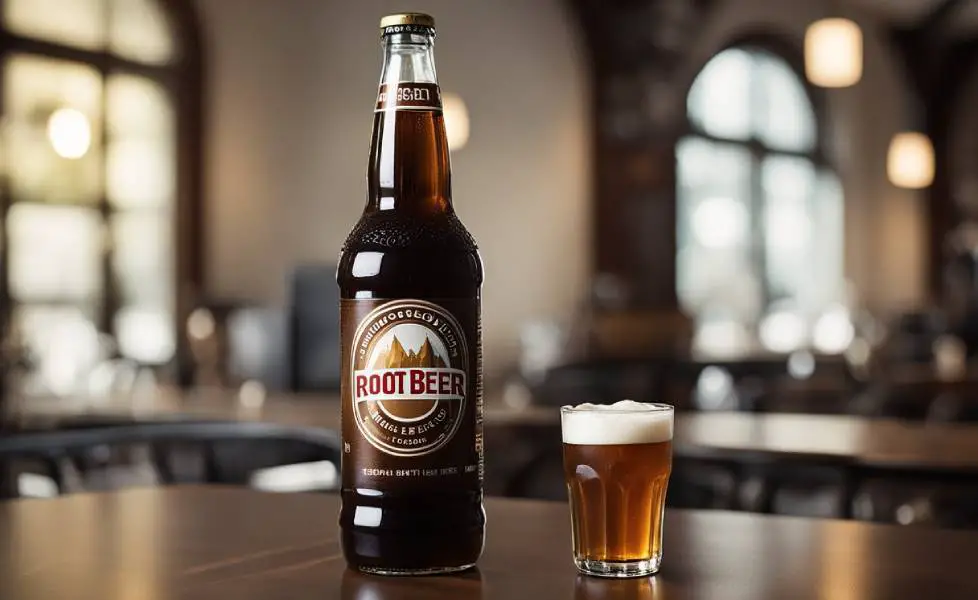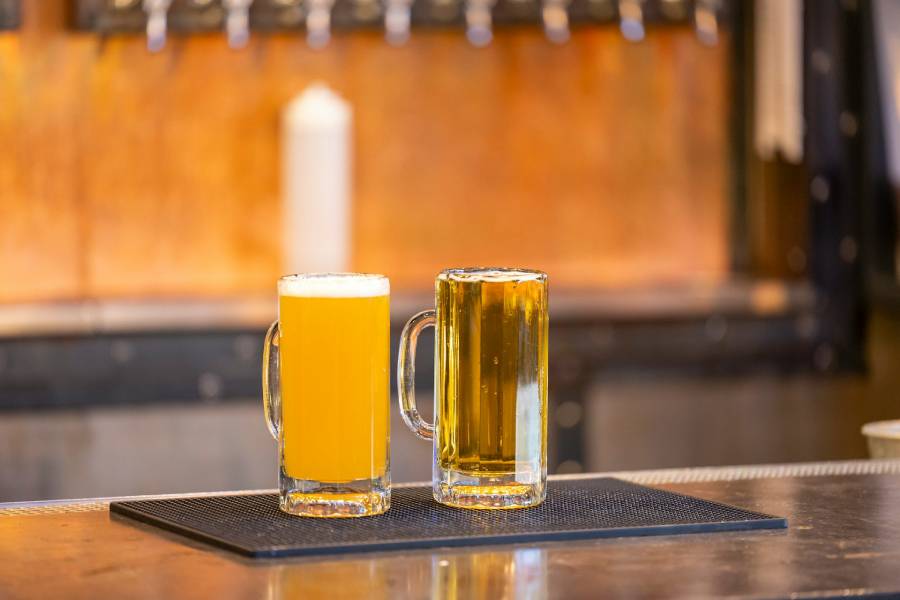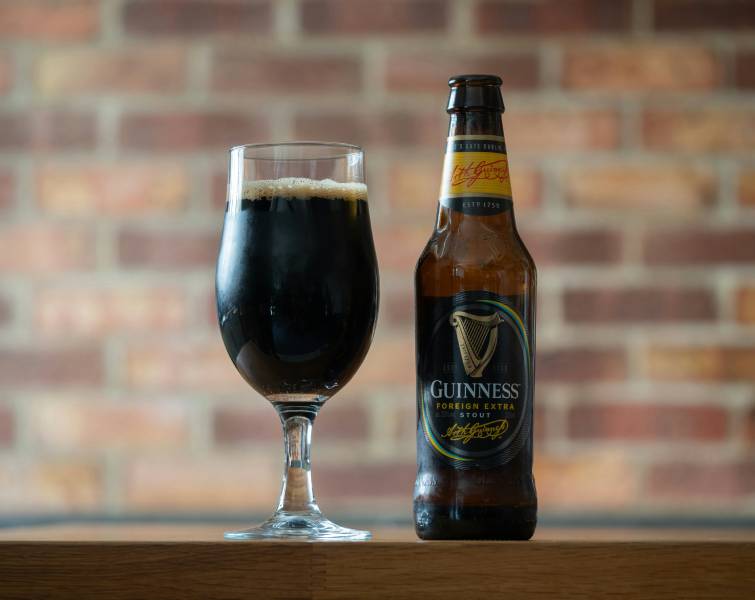Root Beer vs Ginger Beer: This comparison highlights the distinct beverages enjoyed by many. Root beer and ginger beer each offer unique flavors and ingredients. Understanding their differences and similarities can enhance your appreciation for these popular drinks. Explore their distinctive flavors and brewing methods to help you enjoy them fully.
Root Beer vs Ginger Beer Overview
Root beer and ginger beer are two drinks that can appeal to different preferences. Root beer is often associated with nostalgia and childhood memories, making it a comforting choice for many. Ginger beer, on the other hand, is seen as more adventurous and bold, attracting those who seek a bit of excitement in their beverages.
These drinks also influence social settings and occasions. Root beer is a popular choice for family gatherings and casual events. Ginger beer often appears in more sophisticated or experimental settings, such as cocktail parties. The choice between root beer and ginger beer can reflect personal taste and the desired ambiance.
Root Beer Overview
Root beer is typically brewed using a mix of roots, herbs, and spices, with sassafras or sarsaparilla as the primary ingredient. The brewing process involves fermenting these ingredients with sugar and yeast. Most commercial root beers are non-alcoholic, but traditional brews can have an alcohol content ranging from 0.5% to 2%.
Various brands of root beer offer different takes on the classic recipe. Popular choices include A&W, Barq’s, and Mug Root Beer. Craft root beers also bring unique flavors that enhance the drinking experience. The beer has a sweet and creamy taste with hints of vanilla, licorice, and wintergreen.
Root beer pairs well with various foods. It’s a classic match with burgers, enhancing the savory flavors. Pulled pork sandwiches also complement its sweetness. Also, root beer floats are a beloved dessert pairing, combining ice cream with the drink’s creamy, spiced profile. It is widely available in supermarkets, convenience stores, and restaurants.

Advantages of Root Beer
- The combination of sweet, creamy, and spiced flavors offers a distinctive taste that stands out among other sodas.
- Most root beers are non-alcoholic, making them suitable for all ages and occasions.
- The beer is widely available in supermarkets, convenience stores, and restaurants, making it an easily accessible beverage choice.
- Root beer pairs well with a variety of foods, from savory dishes like burgers to sweet treats like ice cream.
Disadvantages of Root Beer
- The beer often contains a high amount of sugar, which can contribute to health issues like obesity and diabetes when consumed in excess.
- While the unique flavor profile appeals to many, it may not be enjoyed by everyone, limiting its audience.
- Some commercial root beers contain artificial flavors, colors, and preservatives, which may not appeal to health-conscious consumers.
Ginger Beer Overview
Ginger beer is traditionally brewed using ginger, sugar, water, and a starter culture like yeast or ginger bug. The brewing process involves fermenting these ingredients to create a naturally fizzy and spicy beverage. Alcohol content can vary, with traditional brews containing 0.5% to 11% alcohol, while many commercial versions are non-alcoholic.
Several brands offer distinct takes on ginger beer, including Fever-Tree, Bundaberg, and Gosling’s. These can be found in supermarkets, specialty stores, and online. The taste of ginger beer is bold and spicy, with a refreshing zing from the ginger, making it stand out from other soft drinks.
Ginger beer pairs well with various foods. It complements spicy dishes like tacos, enhancing their heat. It also goes well with sushi, balancing the flavors with its sharpness. Additionally, ginger beer is a popular mixer for cocktails like the Moscow Mule, adding a zesty kick.

Advantages of Ginger Beer
- Many ginger beers are made with natural ingredients. This makes them a healthier alternative to artificially flavored sodas.
- Ginger has natural digestive properties, and consuming ginger beer can help soothe stomach issues and promote better digestion.
- It is a popular cocktail mixer, enhancing drinks like Moscow Mules and Dark ‘n’ Stormys with its zesty kick.
- Ginger beer offers a bold, spicy flavor that is refreshing and invigorating, appealing to those who enjoy robust drinks.
Disadvantages of Ginger Beer
- The bold and spicy flavor may not appeal to everyone, limiting its appeal among more subtle palates.
- Specialty or craft ginger beers may be harder to find compared to mainstream sodas, limiting accessibility in some regions.
- It can be calorie-dense, making it less suitable for those watching their calorie intake or on a diet.
Comparison Between Root Beer and Ginger Beer
Root and ginger beer each offer distinct profiles and appeal to different tastes and preferences. While both are brewed beverages, their flavor profiles and traditional uses vary widely, catering to diverse consumer preferences and occasions. So, what are the similarities and differences? Here:
Similarities
- Both are carbonated, giving them a fizzy texture and mouthfeel.
- Both typically have a base of water and sugar to provide sweetness.
- Both often contain herbal or spice flavors for their distinctive taste profiles.
- Both can be enjoyed on their own or used as mixers in cocktails.
- Both have historical roots tracing back to traditional homemade recipes.
- Both are available in various brands and regional variations, influencing their flavor profiles.
Differences
- Root beer typically has a sweet, herbal flavor derived from roots such as sassafras, while ginger beer has a spicy, tangy flavor from ginger root.
- Ginger beer tends to have a stronger carbonation compared to root beer, giving it a more pronounced fizziness.
- Root beer originates from North America and has Native American roots. It evolved from traditional herbal teas. Ginger beer originated in England and was influenced by colonial spice trade routes.
- Ginger beer is often used as a mixer in cocktails (like Moscow Mule), providing a spicy kick, while root beer is typically enjoyed as a standalone beverage or used in floats.
- Root beer is more widely recognized globally, with numerous commercial brands and variations. Ginger beer, while also popular, has a smaller market share and is often associated with craft or artisanal production.
The Major Distinguishing Factor
The major distinguishing factor between ginger beer and root beer is their primary flavor. Ginger beer has a spicy, tangy taste derived from ginger root, while root beer has a sweet, herbal flavor often derived from roots like sassafras. This difference in flavor profile sets them apart in taste and culinary uses.

When to Drink Root Beer
The best time to drink root beer is when you want a sweet and refreshing beverage that complements casual meals like burgers or hot dogs. It’s ideal for hot days, gatherings with friends and family, or simply when craving a nostalgic soda experience without alcohol.
When to Drink Ginger Beer
Ginger beer is best when you want a zesty and invigorating beverage with a spicy kick. It pairs well with savory dishes like curries and grilled meats, making it a perfect accompaniment to meals. Ginger beer is also great for mixing in cocktails or enjoying on its own as a refreshing drink.
Which Is Better: Root Beer vs Cider
The better one is ginger beer because the ginger has a unique spicy and invigorating taste that adds complexity to beverages. It’s versatile for mixing in cocktails and pairs well with a variety of foods, offering a refreshing kick. In contrast, root beer has sweeter profiles, more suited for specific tastes or occasions.
Related Questions
Can You Mix Root Beer and Ginger Beer?
Yes, you can mix root beer and ginger beer for a unique flavor combination. The sweetness of root beer blends with the spiciness of ginger beer, creating a balanced and refreshing drink. Experiment with different ratios to adjust the sweetness and spiciness to your preferences.
What Is the Main Ingredient in Root Beer?
The main ingredient in a root beer is typically sassafras root bark, which gives it its distinctive flavor. Other common ingredients include wintergreen, vanilla, and licorice root. These herbs and roots are combined with sugar, water, and carbonation to create the sweet and herbal taste characteristic of root beer.
Can You Make Ginger Beer at Home?
Yes, you can make ginger beer at home using fresh ginger, sugar, water, and yeast. Start by making ginger syrup, then add water and yeast to ferment and carbonate the mixture. After a few days, strain and bottle the ginger beer. It’s a fun and rewarding DIY project!

Conclusion
Root beer and ginger beer offer distinct flavors: root beer is sweet with herbal undertones, while ginger beer has a spicy kick from ginger root. They cater to different tastes and culinary uses; root beer is great for casual refreshment, while ginger beer adds zest to cocktails and savory dishes, providing diverse beverage options.










